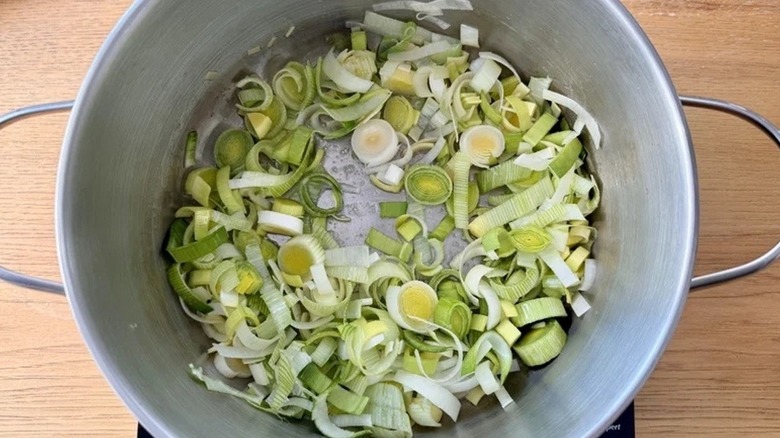Leeks are part of the allium family, which includes pungent favorites such as chives, onions, and shallots, as well as garlic. If you’ve eaten recipes utilizing leeks lately, you may have noticed that leeks have a mild flavor that’s similar to fresh garlic. Because of this similarity, you can substitute leeks for garlic once you understand how to do it.
Leeks, like all members of the allium family, contain allicin, a compound that is responsible for the pungent flavor that’s released by crushing, cutting, or smashing the vegetable. There is quite a bit more allicin in garlic than in leeks, which is why fresh garlic is so much stronger. The trick when using leeks in place of garlic is to use up to twice as many of the leek tops in your recipe to make up for the difference in flavor. Try doing just that when you prepare a side dish such as rosemary and garlic roasted potatoes.
The key to preparing leeks
Leeks are a nutritional powerhouse, containing vitamin K, antioxidants, flavonoids, and more. They’re associated with French cuisine, often paired with potatoes, onions, or asparagus. When sautéed in butter or olive oil, they can release a sweet flavor.
Before you cook leeks, slice them the long way and soak the whole vegetable in cold water to help remove any dirt. Many people will only use the white bulb and the light green tops. These are the stronger tasting sections of the leek. If you’re replacing garlic with leeks, you’ll find the more pungent flavor in the light parts is closer to the taste of garlic when you use more of it.
With a little preparation, you can also cook with the dark green parts to complement the flavor of the dish, eliminate food waste, and add nutrition. Doing this will create a more gentle pungency, and your dish will possess a milder flavor. Try making this creamy potato and leek soup to sample the traditional flavor of leeks. Then, you might adjust the amount of leeks in the recipe to craft a greater garlic aspect to your dish!






